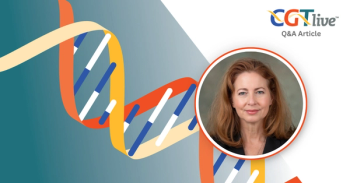
Cilta-Cel Shows Durability in Relapsed/Refractory Multiple Myeloma
Overall response rate was 95%, including 75% of patients who achieved a complete response (CR) or better, with a median follow-up of 5.8 months at data cutoff.
This content originally appeared on our sister site,
Ciltacabtagene autoleucel (cilta-cel) may be a durable treatment for patients with
Cohen discussed data from the CARTITUDE-2 study that evaluated cilta-cel's safety and efficacy that were presented at the 18th International Myeloma Workshop.
“These responses appear to be deepening over time and follow-up is ongoing,” he said. “Of course, what we’re all waiting for is the longer-term follow-up to see if the durability of response is going to be better in this less heavily treated population compared to the more refractory patients treated historically.”
Cohorts B, C, D, and E, for whom data are still under analysis, consist of patients with early relapse after frontline therapy who are progressing after a prior B-cell maturation antigen (BCMA)-targeted therapy, or as consolidation for patients after transplant or induction therapy.
READ MORE:
The researchers’ primary objective was minimal residual disease (MRD) negativity of 10-5 sensitivity assessed by next-generation sequencing, with secondary objectives of overall response rate (ORR), duration of response, time and duration of MRD negativity, and incidence and severity of adverse events (AEs).
A single cilta-cel infusion was administered to 20 patients 5 to 7 days after the start of lymphodepletion. With a median follow-up of 5.8 months at data cutoff, ORR was 95%, including 75% of patients who achieved a complete response (CR) or better.
The safety profile was consistent with those observed in previous studies, with the majority of nonhematologic AEs being low grade. The most common grade 3/4 hematologic AEs included neutropenia (90%), thrombocytopenia (35%), anemia (40%), lymphopenia (55%), and leukopenia (55%). Grade 3/4 neutropenia and lymphopenia persisted after 60 days in 25% and 45% of patients, respectively.
Additionally, 85% of patients developed cytokine release syndrome (CRS), with the majority being grade 1 or 2 events. Several patients (15%) experienced typical CAR T-cell–related immune effector cell-associated neurotoxicity syndrome (ICANS).
“A number of mitigation strategies have been implemented in the CAR T program since then, including enhanced bridging therapy to reduce tumor burden prior to infusion early and aggressive treatment of CRS and ICANS, as well as handwriting assessments since microgravity was a presenting feature in some of the patients,” Cohen said.
The implementation of these strategies has significantly reduced the incidence of movement and neurocognitive disorders in the more than 100 additional patients who have been dosed in the time since data cutoff. However, follow-up is still ongoing, Cohen explained.
Cilta-cel continues to be evaluated in a phase 3 study, CARTITUDE-4, in which it is being compared with standard-of-care treatment.
Reference
1. Cohen A, Agha M, Madduri D, et al. Efficacy and safety of ciltacabtagene autoleucel, a BCMA-directed CAR-T cell therapy, in patients with progressive multiple myeloma after 1–3 prior lines of therapy: Initial results from CARTITUDE-2. Presented at: 18th International Myeloma Workshop; September 8-11, 2021; Vienna, Austria.
Newsletter
Stay at the forefront of cutting-edge science with CGT—your direct line to expert insights, breakthrough data, and real-time coverage of the latest advancements in cell and gene therapy.

















































